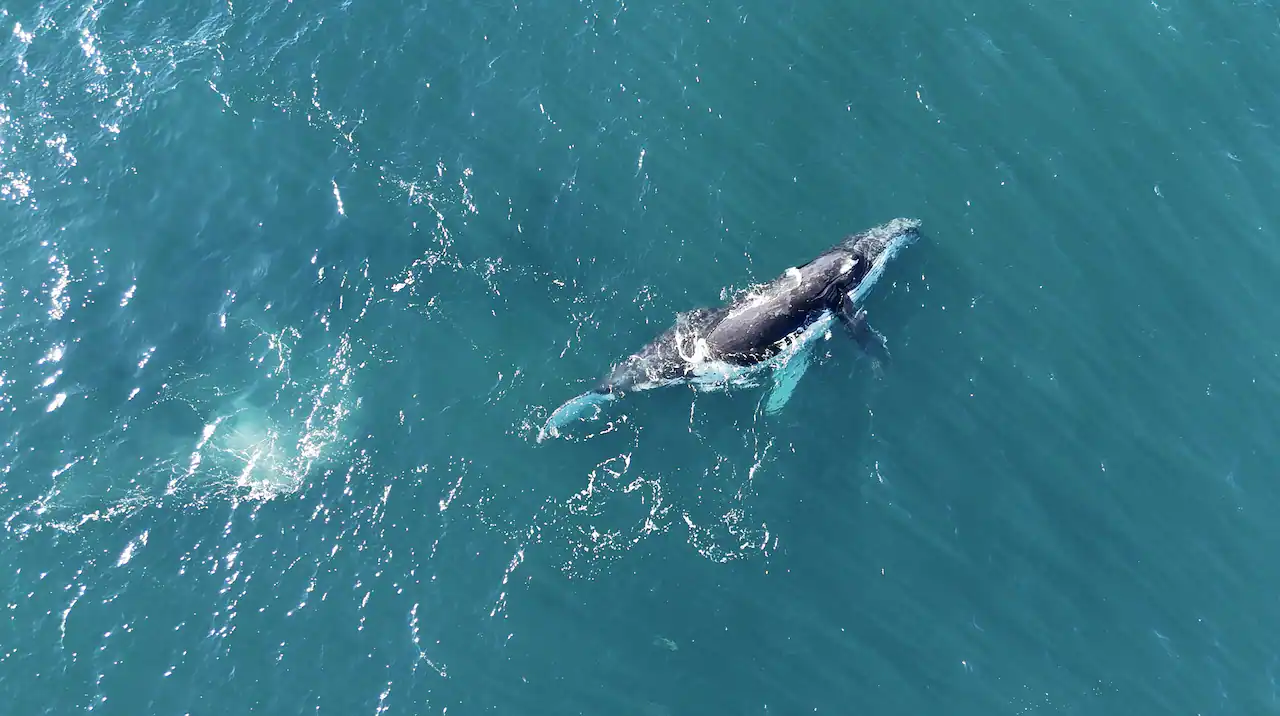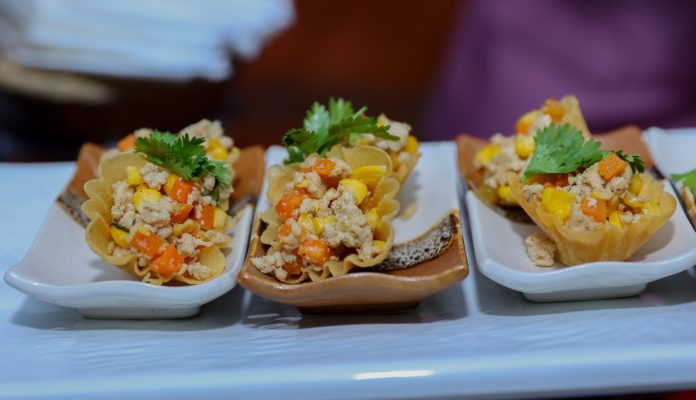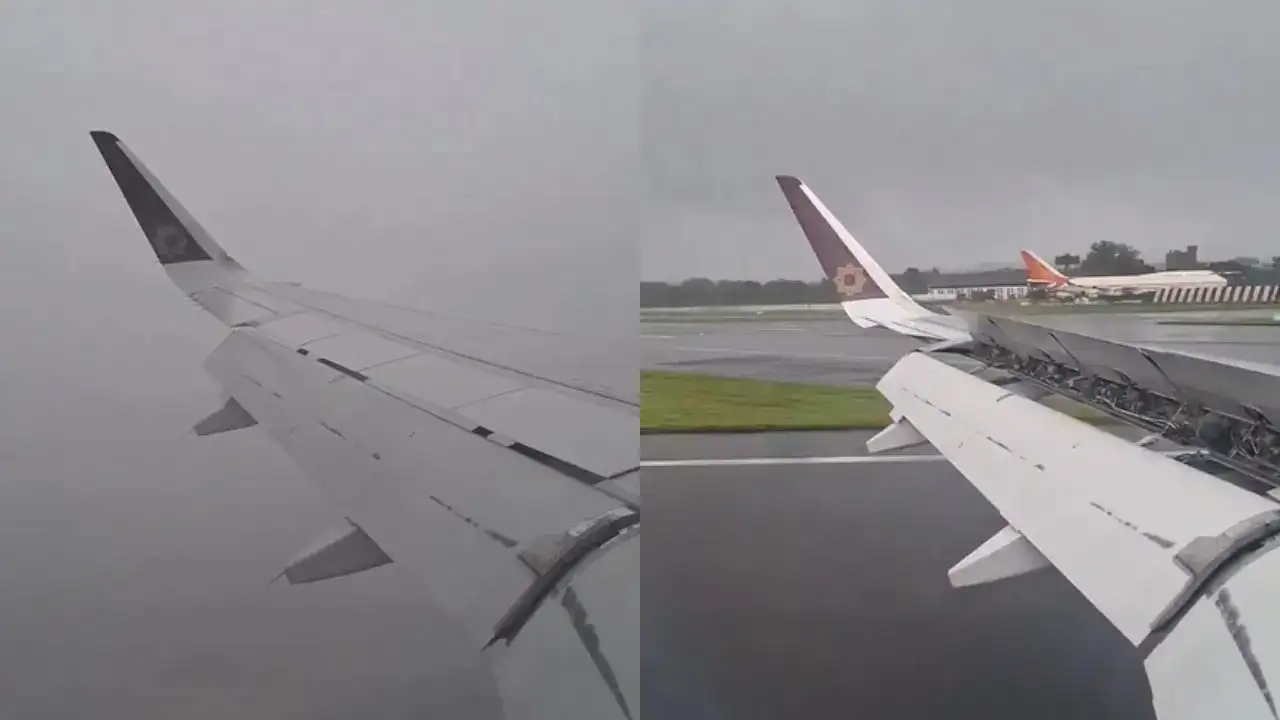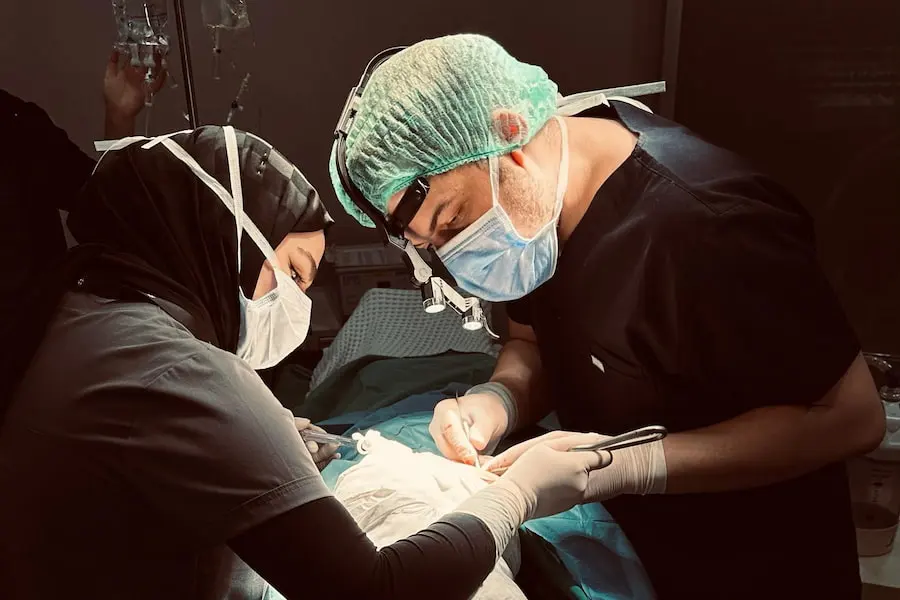By Internewscast
Copyright internewscast

On the NSW Central Coast’s craggy headlands, you hear the gasp before you spot the splash. Whether it’s a spout of air, a whip of a tail or a magnificent full-body breach, whale migration season stirs a ripple of excitement among the binocular-braced onlookers at Norah Head.
Dr Chelsea Marshall is standing among them on a makeshift stage, addressing the crowd, which has gathered to celebrate the importance of whales in Indigenous culture.
Marshall, a Gumbaynggirr woman and ecologist, recounts a Dreaming story traditional to her Country on NSW’s Mid North Coast. It’s about two koala brothers who become stranded when the sea rises around them. Luckily, a humpback whale comes to their rescue and helps them return safely to land.
“It’s that whale that comes along every year, bringing joyfulness, peace and people together, like today,” she explains.
A humpback whale on Bundjalung Country, which extends from northern coastal NSW to southern coastal Queensland. Credit: Natalia-Baaechtold
Marshall is working alongside Walbanja educator Dr Jodi Edwards, and Ngarrindjeri Mimini cinematographer Natalia Baechtold, to create a cultural map that weaves together traditional knowledge of whale migratory patterns and behaviours. As traditional custodians, the trio hopes that stories from the world’s oldest living culture can help better safeguard whales and dolphins.
The year-long project, Unbroken Whispers: The Ripples Connecting Sea Kin, traces the annual whale migration paths along Australia’s east coast, from K’gari (Fraser Island, Queensland) to Lunawanna-allonah (Bruny Island, Tasmania). Blending Indigenous research and modern science, they are tracking southern right whales, humpback whales, orcas and dolphins.
Walbanja educator Dr Jodi Edwards (pictured centre) is bringing traditional knowledge to the fore as part of the Unboken Whispers project. Source: Supplied / Natalia-Baaechtold
“Story sharing for us has been here for thousands of years and it has never been accepted,” she says, adding that this is something the group wants to change.
‘A dangerous and fatal obstacle course’
Australia’s ‘humpback highway’ is not just a spectacle — it’s a vital migratory path.
Humpback whales typically pass Australia from May to November, spending the winter breeding in warm tropical waters before returning to southern Antarctica in summer to feed.
The project is tracking the migration pathways for several species, including humpback whales and dolphins, pictured here on Gumbaynggirr Country. Source: Supplied / Natalia-Baaechtold
Today, ghost nets, shipping routes, commercial fishing and seismic blasting are just some of the hurdles disrupting migration pathways.
“It’s this process of industrialising the ocean that impacts the ability of whales to follow those ancient songlines in an unimpeded way,” says Dr Jack Pascoe, a Yuin man and the Biodiversity Council’s co-chief councillor.
In June, a world-first interactive map of ‘blue corridors’ revealed a “dangerous and sometimes fatal obstacle course” for whales navigating ship strikes, entanglement in fishing gear and shark nets in Australian waters. The interactive map, developed by the World Wide Fund for Nature and more than 50 global research organisations, incorporates three decades of satellite data to map the pathways for 14 great whale species.
The University of Queensland (UQ) has also observed a “clear and sustained change” in the southern return migration of humpback whales, according to associate professor Rebecca Dunlop. The peak of southern migration is now three weeks earlier than it was 21 years ago, according to UQ surveys.
Despite mounting threats, humpback whales were removed from Australia’s threatened-species list in 2022.
“That’s the conservation paradigm. If you only protect the species that are threatened, then other things can easily find their way onto that list,” Pascoe says, adding that the future of all ocean life is uncertain.
Respectful management
In many Aboriginal communities on the east coast of Australia, Sea Country — a term used by some groups to describe the ocean and coastal environments — is traditionally considered women’s business.
For Edwards, who is from the Yuin Nation on the NSW South Coast, this connection runs even deeper: She has kinship ties to whales. According to lore, when her people pass away, they become orca in the ocean.
“[Unboken Whispers] about looking through an Aboriginal women’s lens on conservation,” she says.
Dr Jodi Edwards has a profound kinship connection to whales. Source: Supplied / Natalia Baechtold
One of the project’s aims is to make a series of recommendations to the Australian government for migratory species listed under the Environment Protection and Biological Conservation Act 1999.
It will also evaluate how injured or dead whales can have a more traditional burial to honour each animal’s life and connection to Sea Country.
Our project is about getting our cultural and relational context into the management and conservation of these very important species.
But managing marine animals is a complex issue that requires balancing practicality with cultural sensitivity.
Entanglements of whales and dolphins in fishing and shark nets are becoming more common, says Rob Cooley, a saltwater man who has connections to Gamay-Botany Bay, Sydney, and the NSW South Coast.
Cooley is a senior ranger with the Gamay Rangers — an Indigenous group of rangers who work to protect and restore the land and waters of Gamay (Botany Bay).
He explains that Burriburri (the humpback whale) is the overarching spirit ancestor for the Dharawal people, featuring in many Dreaming stories.
Humpback whales carry lore for many First Nations groups and are considered totemic and sacred. Source: Supplied / Natalia Baaechtold
Traditionally, the carcass of a deceased whale that washes up onshore would be treated naturally; left for sharks or with some body parts used ceremonially, as tools or instruments. Today, it might be buried on land or transported to a landfill or incinerator.
The Gamay Rangers are working with the NSW government to recommend cultural protocols.
Resurfacing songlines buried deep under water
The Unbroken Whispers project aims to build a bridge between two worldviews: Indigenous and non-Indigenous.
“We’re moving our cultural knowledge systems into a place that has equity and equality with Western science — the two of them are valuable,” Marshall says.
One of the challenges of disseminating traditional knowledge is that it has historically been shared orally and not necessarily recorded in databases or literature.
“Lots of Aboriginal people don’t have access to scientific journals; there’s a disparity in information sourcing,” she says.
An Unbroken Whispers panel at Whale Festival Hervey Bay, on Butchulla Country, Queensland. Source: Supplied
Some of these songlines and ancient stories can be mapped with modern tools, explains Marshall. For example, a geographic information system (GIS) software can help to visualise geospatial relationships, making the “intangible become tangible”.
Seafloor maps outline the paleoshoreline — the submerged pathways that humpback whales travel along today — and reveal evidence of Aboriginal songlines and artefacts deep underwater.
“We’ve already seen sea canyons, sea mounts, old river beds and lakes, stone tools and old trees coming through benthic seafloor mapping and lidar imagery work,” Marshall says.
But uncovering the past can also bring old wounds to light. There are key sites where massacres of Aboriginal people and whales went “hand in hand”, Edwards says.
One such site is Convincing Ground, near Portland Bay on Victoria’s coast, where British whalers killed members of the Kilcarer Gundidj clan at one of Victoria’s first whaling stations.
The project hopes to address gaps in knowledge — and history.
Dr Jodi Edwards (left) and Chels Marshall (right) hope the project will help to inform sea Country planning and give First Nations people greater access to cultural knowledge. Source: Supplied / Natalia Baechtold
By mapping stories that are old and new, First Nations people have more equitable access to information for native title and Sea Country planning.
“There is a lot of knowledge contained in us as people, the landscape and the species. The more that country gets damaged, the more of that knowledge is eroded,” Marshall says.
The project’s findings are relayed at festivals up and down Australia’s east coast, such as the one at Norah Head Lighthouse, on Worimi Country.
The event honours Durrungan, the humpback whale, a powerful totem of the sea. Dotted around the festival, people tune into the cultural rhythms of the sea — crafting bark canoes, weaving, dancing, yarning or listening to a whale soundbath.
Whether the crowd is Indigenous or not, or considers whales a totemic or keystone species, there is a shared connection.
These animals bring a story around peace, harmony and understanding.



